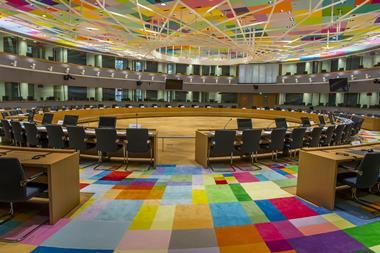The Platform on Sustainable Finance (PSF) has published its delayed final report on a social taxonomy, proposing a new structure in particular in response to concerns about administrative burden for companies that may need to report against such a framework.
Along with a report on an extension of the green taxonomy, the report on the social taxonomy will form part of a future review by the European Commission about developing the EU taxonomy framework.
The Commission today said it thanked the PSF for its work over the last 18 months on the social taxonomy report and that “it will be carefully analysed in due course”.
According to the PSF’s report, the “most obvious impact” of a social taxonomy would be on financial market participants, as institutional investors – in addition to issuers – would have guidance on how social investments were defined and which criteria they would need to apply if they wanted to create or invest in a financial product with social objectives.
It also said a social taxonomy would help prevent the use of “already existing, but less-developed, systems when evaluating socially beneficial investments, thus preventing ‘social-washing’”.
Antje Schneeweiß, of the working group for church investors in Germany and PSF rapporteur for the social taxonomy work, highlighted that ESG ratings diverged more with respect to social matters than environmental issues.
She said there was a need for social investments and that investors were increasingly looking for social investment opportunities, as the demand for social bonds during the height of the pandemic showed. There was also a need to be able to better identify potential social risks, she said.
Common structure
The PSF consulted on a draft social taxonomy report last year, getting responses from business, investors, NGOs, and others.
In their feedback, Norges Bank Investment Management (NBIM) chief governance and compliance officer Carine Smith Ihenacho and Severine Neervoort, senior analyst, corporate governance, had asked for more information about the purpose of a social taxonomy, how it could be used in practice, and what the impact would be on companies.
The PSF said that in response to concerns about an increasing administrative burden it had made efforts to align the structure of the suggested social taxonomy more closely to that of the existing environmental taxonomy.
This means that a previously proposed “horizontal dimension” and “vertical dimension” have been collapsed into a single structure containing three objectives, each of which addresses a different group of stakeholder that economic activities can affect:
- ‘decent work including value-chain workers’;
- ‘adequate living standards and wellbeing for end-users’; and
- ‘inclusive and sustainable communities and societies’.
The PSF report noted that the structure of the three stakeholder groups – workers, consumers and communities – followed EFRAG’s draft approach to reporting by companies under the proposed Corporate Sustainability Reporting Directive (CSRD).
It has recommended to the Commission that a social taxonomy be structured similar to the way it has recommended and that this could be achieved by making changes to the Taxonomy Regulation. It also suggested coordinating the legislative processes on the social taxonomy, the sustainable finance disclosure regulation (SFDR), and the CSRD, as well as the legislative processes on corporate sustainablity due diligence.
“All of these relate to investor and company processes and to reporting on responsible business conduct and governance,” the PSF report states. “Given the complexity of these topics, it seems crucial to define a common ground of topics covered and indicators to be reported on.”
Next steps
According to the PSF, the Commission will publish its report this year, which will be a response to the PSF’s report and define what the next steps will be, for example if a social taxonomy will be developed or not.
According to the advisory group, the next steps for developing a social taxonomy would include:
- clarifying the minimum safeguards;
- conducting a study on the impacts of a social taxonomy considering different options for application and designs; and
- working out a rationale for prioritising objectives and sub-objectives.
In anticipation of a social taxonomy becoming part of the EU regulatory framework, the PSF has suggested “the market” could already make use of the PSF framework, for example by establishing a list of objectives and sub-objectives to contribute and voluntarily starting to report to customers and stakeholders.
Maria van der Heide, head of EU policy at ShareAction, said the responsible investment campaign group urged the Commission to respond to the social taxonomy report swiftly and develop a social taxonomy without delay.
“The subgroup did an amazing job identifying the ingredients a social taxonomy needs to be meaningful and efficient,” she said. ”This structure builds on and reinforces the environmental taxonomy. Against the backdrop of growing inequalities in our societies, further aggravated by health and climate crises, the introduction of the social taxonomy must not be delayed.”
Work on a social taxonomy by the Commission would come after it was recently severely criticised by some groups for its decision to include certain natural gas and nuclear-related activities in the green taxonomy.
The latest digital edition of IPE’s magazine in now available




















No comments yet